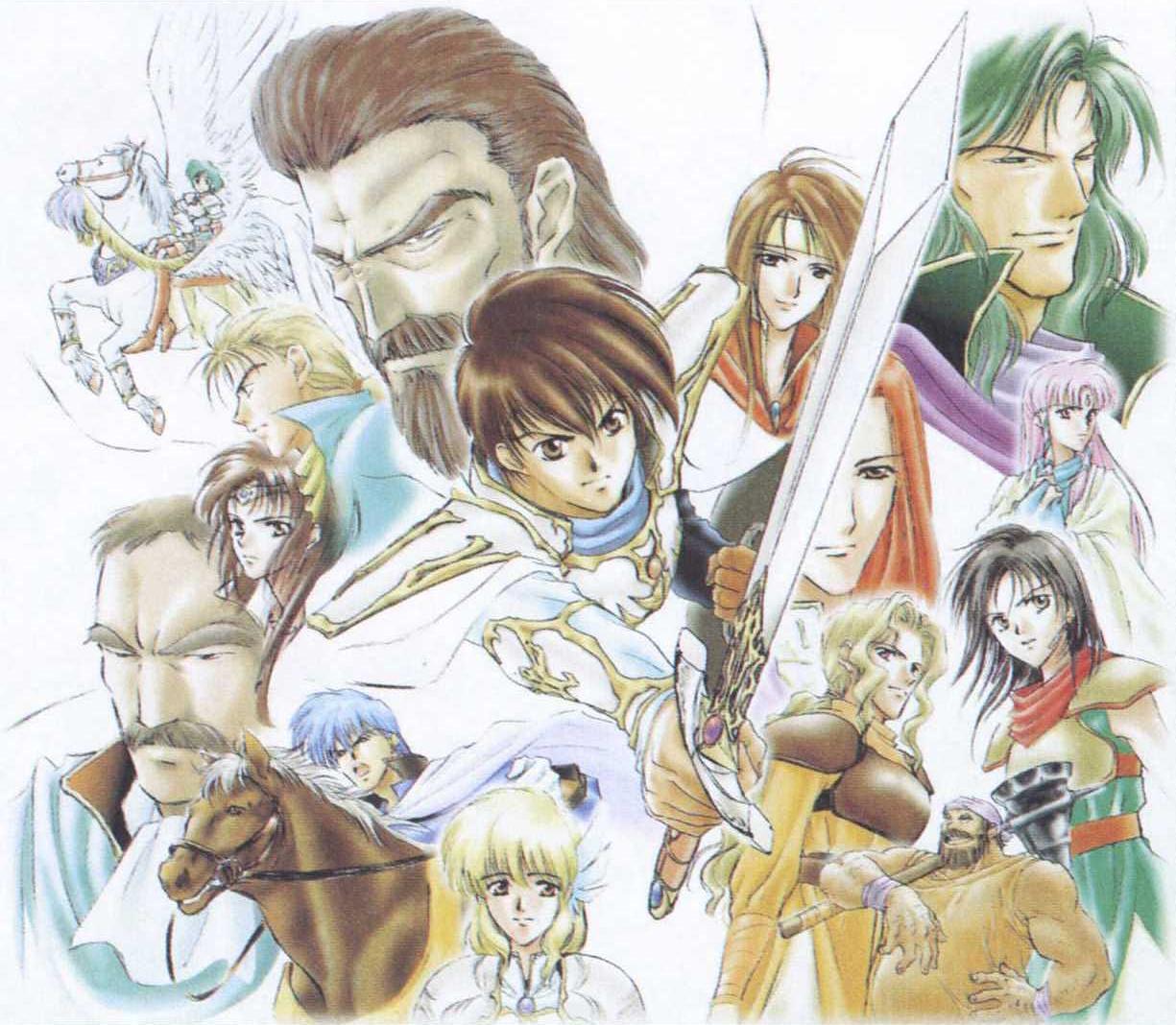 |
| Found at: https://www.pixiv.net/member_illust.php? mode=medium&illust_id=42078629 |
Eldigan The Lionheart (or Eltshan, according to some fan translations) is the Duke of Nodion, a duchy of The Kingdom of Agustria from Fire Emblem: Genealogy of the Holy War. Eldigan is a major player in the War between Agustria and Grannvale, as well as a close friend to Sigurd of Chalphy and Quan of Leonster.
Eldigan grew up a descendant of the Crusader Hezul, one of the crusaders in the original Holy War. As a result, he was blessed to inherit Major Hezul blood and would grow to become the champion to wield the legendary Demon Sword Mystletainn.
But just who is he, and what kind of man is he? Well to start, Eldigan is a loyal man with a heart of gold. He wants nothing but the best for those he loves and those he reigns over, and as a result, he has been shown to put his life on the line for their sakes. This is especially true for his younger sister, Lachesis, who he would do anything to protect - even march to his own death.
The true driving force behind Eldigan's character is his history with Sigurd of Chalphy and Quan of Leonster - a deep rooted friendship that spans years beyond the beginning of the events of Holy war.
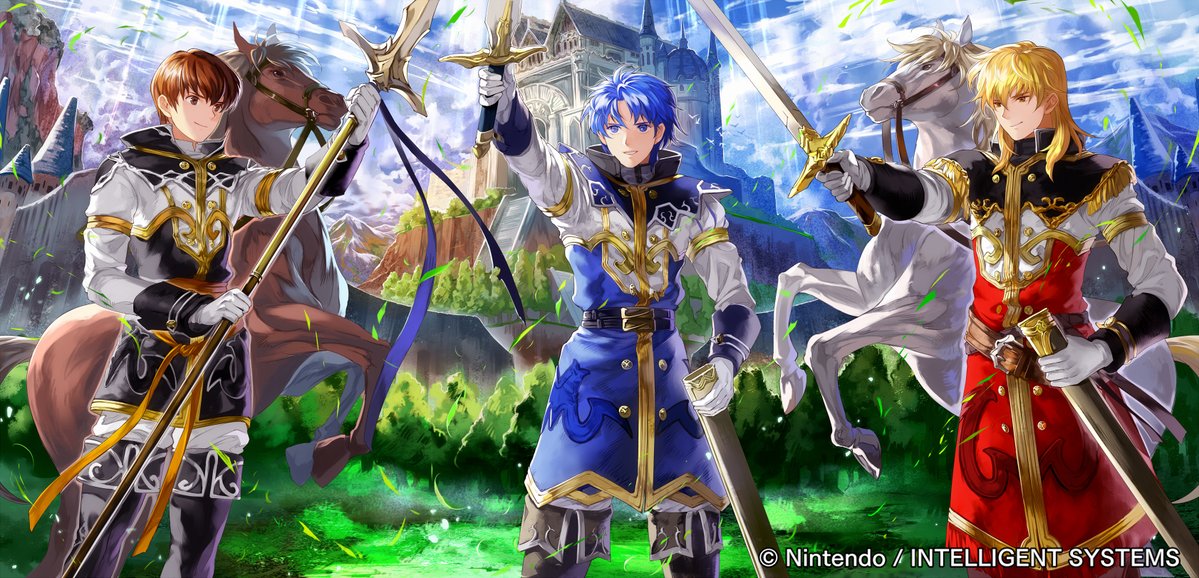
(Left to Right: Quan of Leonster, Sigurd of Chalphy, Eldigan of Nodion. From Fire Emblem Cipher.)
Sigurd, Quan and Eldigan's history together goes back to the days of their youth, when they all trained in a Grannvalean knight academy together. The three were close friends, and as implied in Chapter 1 of Holy War, the three would sit together and share some wine (as recounted by Sigurd himself). The friendship they shared continued on into adulthood, and the trio would meet once again during the Grannvalean campaign into Agustria.
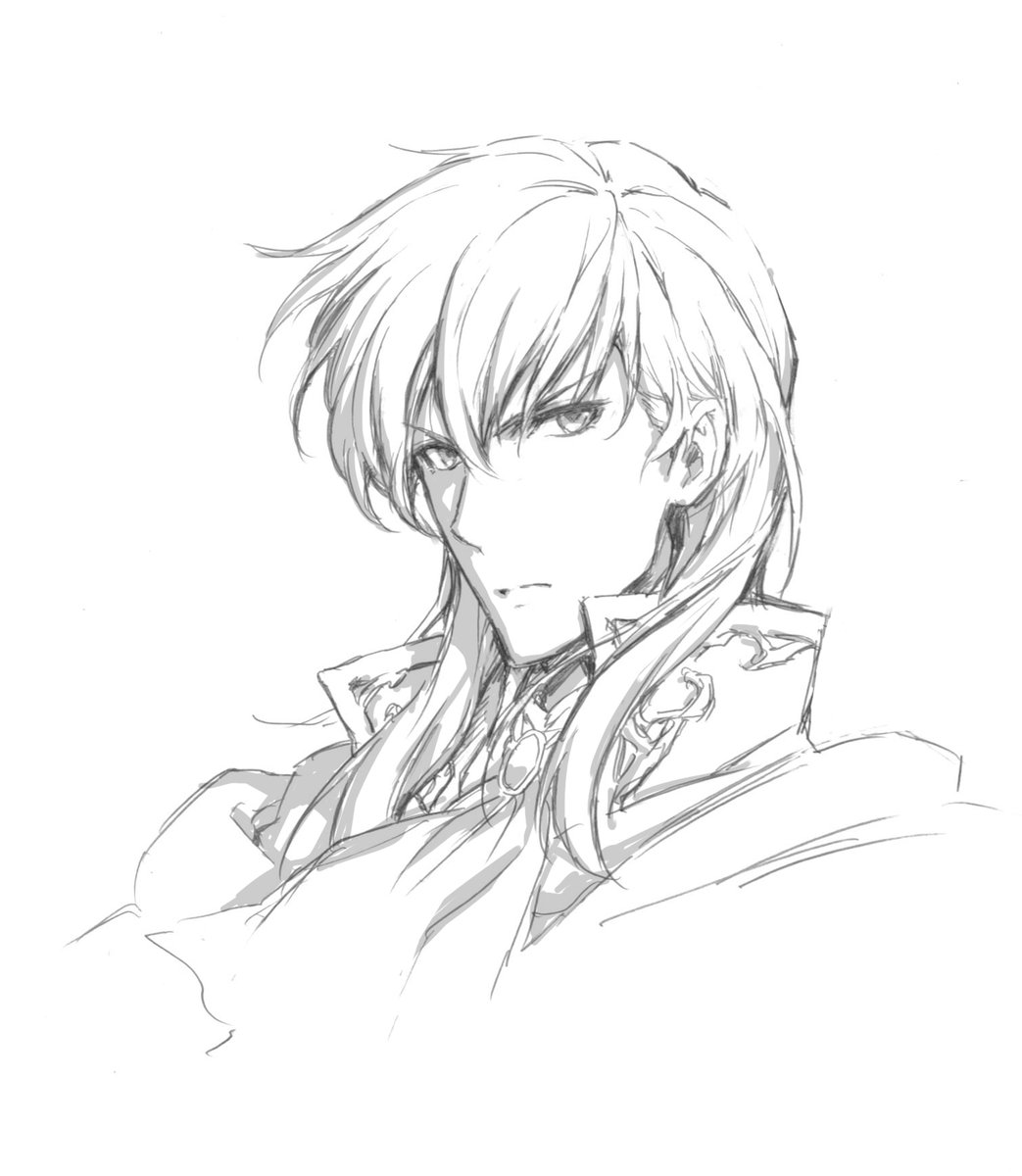 |
| A sketch of Eldigan by Kotaro Yamada |
So, let me pose a question to you all:
Is Eldigan of Nodion as unquestioningly loyal to his King as we all assume?
The answer to that is no.
Eldigan of Nodion is not loyal to King Chagall of Agustria, but to Agustria and her people. His loyalty also lies with his honour as a knight, and his duty to serve his motherland. Despite this, Fire Emblem: Heroes paints him as a man who lives only for his liege (when this is not quite the case at all).
As a descendant of the Crusader Hezul, it is Eldigan's duty by blood to protect King Chagall of Agustria, as his forefathers did for generations before him. He is loyal to his King, yes, but he still shows he has his doubts regarding some of the decisions being made in regards to the war in Agustria.
In Chapter 2 of Holy War, we see the scene opening with Eldigan making his way to meet with King Chagall in order to end the military buildup (as he has grave concerns over the welfare of the people, who he knows will suffer more than any other). Despite his pleas, however he is locked away for questioning Chagall.
Upon being released, he gets into a spat with Sigurd regarding the Grannvalean invasion of Agustria, which he is clearly not pleased with. In fact, Eldigan tells Sigurd the following:
“I did, Sigurd. I saved the king. He is all that’s left of Agustrian royalty. I don’t care what he’s done. He’s still my master, and I can’t sit back and let him die.”
He then goes on to say the following:
"Sigurd, what’s going on here? Your army has gained control of the capital city, and I hear that Grannvale has dispatched officials to each of our castles. You’re treating us just like we were a tributary state. Did Grannvale take occupation of Agustria while I was away!? Your answer better be good, Sigurd!”
(Quotes obtained from: https://serenesforest.net/genealogy-of-the-holy-war/scripts/script-translation/chapter-2-disturbance-in-agustria/)
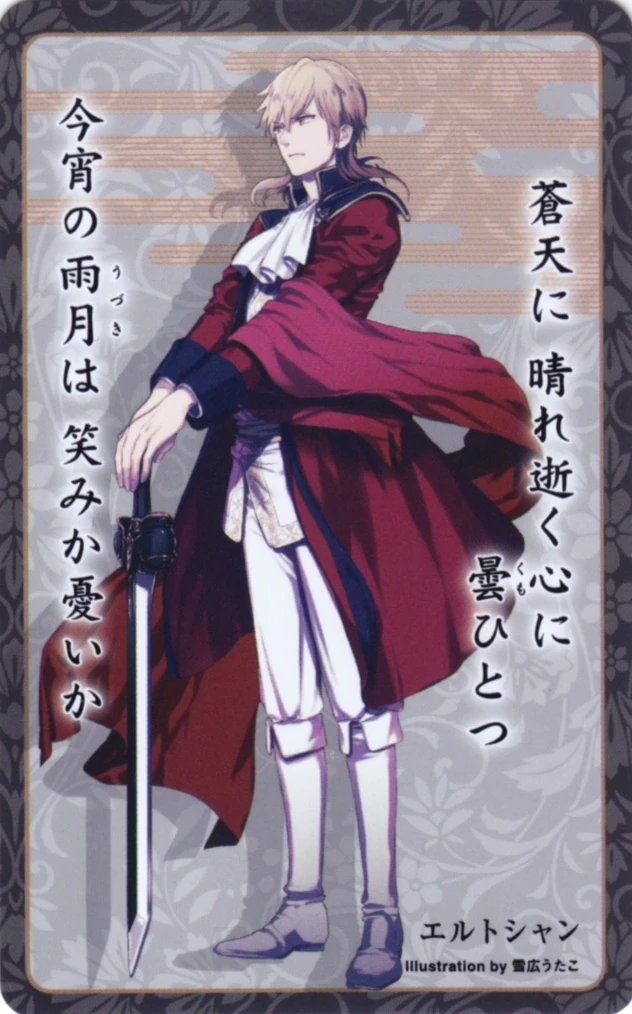 |
| Eldigan as a Paladin from the 100 songs of heroes set |
Eldigan seems frustrated by his King's actions in the beginning of this chapter, and decides to hold back his Cross Knights until absolutely necessary. He's forced into action too soon, though, as the fall of Madino causes Chagall to question Eldigan's loyalty.
At this point, Eldigan is left with two choices:
1) He betrays Agustria and joins Sigurd's army
Or
2) He rides into battle and risks either his own death, or Sigurd's.
Most people will gladly say that he should betray Chagall, since the man is clearly off his rocker, and staying by his side is insane. Because of the choice Eldigan makes, many dismiss his character (or worse, compare him to Xander from Fire Emblem: Fates). He chooses to ride into battle, knowing he would be executed for high treason if he betrayed Chagall. Betraying Agustria would mean betraying the people he worked tirelessly to protect from the horrors of war, and turning his back on his ancestors. He could have joined Sigurd, but in doing so he would have lost everything he spent his life working toward.
But if he were to perish in battle, wouldn't he still lose everything? The answer is honestly no - he would still keep his honour, which is something incredibly important for a man like Eldigan. He fights Sigurd in the end so he can prove he's loyal to Agustria, so he can serve as his ancestors did. In riding out to battle, he knows his death is imminent.
"If I'm to die, I'll die fighting."
(Quote obtained from: https://serenesforest.net/genealogy-of-the-holy-war/scripts/script-translation/chapter-3-lion-king-eltshan/)
With his intentions clear, and now unable to turn back, Eldigan faces Sigurd, with the Mystletainn by his side. By this point, he has one set goal - to defeat Sigurd in battle and force the enemy troops to withdraw, therefore preventing the fall of Agustria.
The reason I see it as incorrect for Eldigan to be painted as being "unquestioningly loyal to his lord," is because he does indeed question Chagall on numerous occasions. He never gets frustrated at those who oppose his Lord, but only displays anger because the peace he's worked tirelessly to maintain is broken. Once he's on the battlefield, his mind is made up, and it isn't until his beloved sister Lachesis speaks to him that he's able to be convinced otherwise.
Lachesis: "Eldigan! It's me, your sister!! Please, stop this senseless fighting! You can't fight Sir Sigurd! Is betraying your friends part of the honour of being a knight?! Trust him! Can't you hold your attack off a little bit longer?"
Eldigan: "I don't want to see you cry, but I have no other way out of this! If Chagall is defeated, Agustria will fall as well."
Lachesis: "That's not true! If Chagall withdrew his troops, Sir Sigurd would back out of this. Please talk to King Chagall. He can't ignore the commander of the Cross Knights."
Eldigan: "... Okay... I'll give it one more shot. I'd rather risk my life for my friend than for this crazy war. That is the way of the knight. Lachesis, this sword is for you."
Lachesis: "Isn't this the Earth Sword?! Eldigan, I can't take this from you!"
Eldigan: "Lachesis, keep it as a memento from me... Just in case. Now you be careful!"
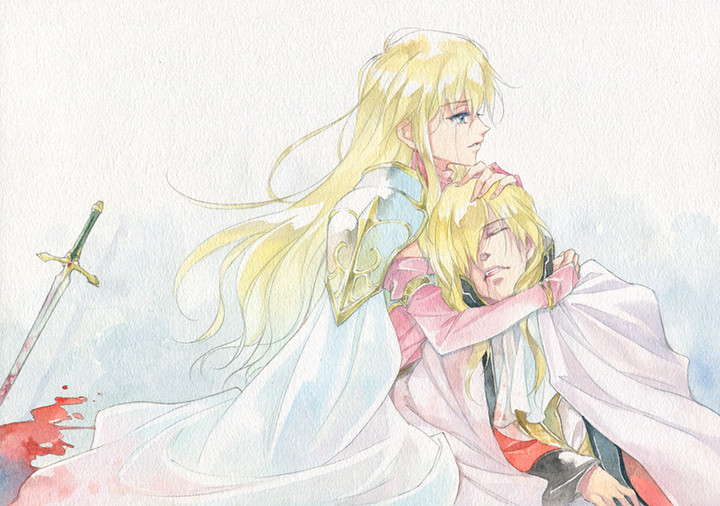 |
| Found at: https://www.zerochan.net/993147 |
And so the Duke of Nodion rides away, knowing his fate is sealed. He rides back to Agustria castle, praying that his words will hold weight against his King's ambitions. Upon giving Lachesis the Earth Sword, he tells her to keep it as a memento "just in case," but he knows she will never again see him alive.
His death is meant as a sacrifice, and in the end he does realize what's more important. His choice to ride back and challenge King Chagall is a betrayal - not of Agustria, but of his Lord. So while he ultimately comes across as stubborn, he goes out in the most selfless way possible. Eldigan allows himself to die for his friend and his sister, his heart finally resolved to stand up and openly challenge the rule of a (borderline) tyrannical king. Despite knowing that nothing will come of it, he holds onto that tiny shred of hope that someday things might change for the better.




